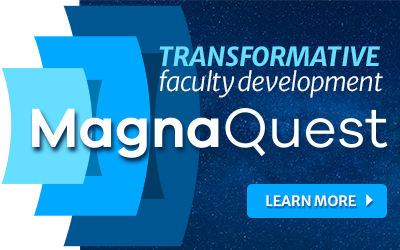Building Alliances and Networks of Support in Higher Education: A New Era in Higher Education
This article first appeared in Academic Leader on April 15, 2019. © Magna Publications. All rights reserved. An irony of higher education is that as college degree attainment has become more common and necessary for employment and economic growth, governmental investment has declined. Many state legislatures have reduced their support for higher...
Fundraising: Lead with Gift Officers in Mind
This article first appeared in Academic Leader on October 1, 2019. © Magna Publications. All rights reserved. In higher education fundraising, the people who identify, cultivate, and solicit charitable contributions are critical assets. These gift officers strengthen the bonds between alumni and their alma maters by facilitating the donation of major...
Why Republicans Distrust Higher Education (and What We Can Do about It)
This is the first year that the Gallup poll has included political affiliation in its survey, so there is less historic data than one might desire. However, taken together, the two surveys point out differences in attitudes that can be either a problem for higher education to confront or an...
Institutional, Chair Challenges in Recruiting Faculty in STEM Disciplines
For many years, those in higher education have been hearing about the aging of our faculty members and the new hiring that should take place, if resources allow, to replace those who leave. The mass exodus predicted has been blunted to some degree by the end of age-related mandatory retirement...
Your University Is Too Small
It is quite possible that the three largest explosions you can create occur if you drop an atomic bomb, set off a hydrogen bomb, or utter the words “students are customers” in the presence of a college professor. Students aren’t really their professors’ customers, of course, and there are plenty...
Creating a Data-Informed Culture
In this era of “doing more with less,” institutions are searching for operational efficiencies and predictors to increase enrollment and retention, reduce cost, ensure students graduate, and improve the learning experience. Finding those efficiencies, evaluating their effectiveness, and then implementing those changes requires data.
Solving the First-Year Student Puzzle
Improving student success, and thereby increasing retention and boosting four-year graduation rates, is a challenge familiar to all higher education institutions whether they are large or small, public or private. With the national four-year college graduation rate average hovering around 50 percent, the industry has an obligation to confront the...
5 Reasons to Keep Loving Your Job in Admissions
In 2000 I wrote an article for the Journal of College Admissions called “Admissions: The Job You Keep.” It was a tribute to the difference my admissions counselor made when I was choosing a college in the early 1990s and a reflection on everything I appreciated about the admissions profession after three...
Why Colleges Shouldn’t Focus on Failure
When it comes to boosting retention and completion, many colleges engage in predictive analysis to determine which students are “at risk” of failure—then focus most support resources on trying to turn these students’ fortunes around.
Can Blended Learning Boost Retention?
What if blended learning could do more than utilize in-class time more efficiently and increase student interest in a course? What if it could actually boost retention? Retention is a critical concern for schools such as Long Island University (LIU) Brooklyn that work with populations that include at-risk and underprepared...












